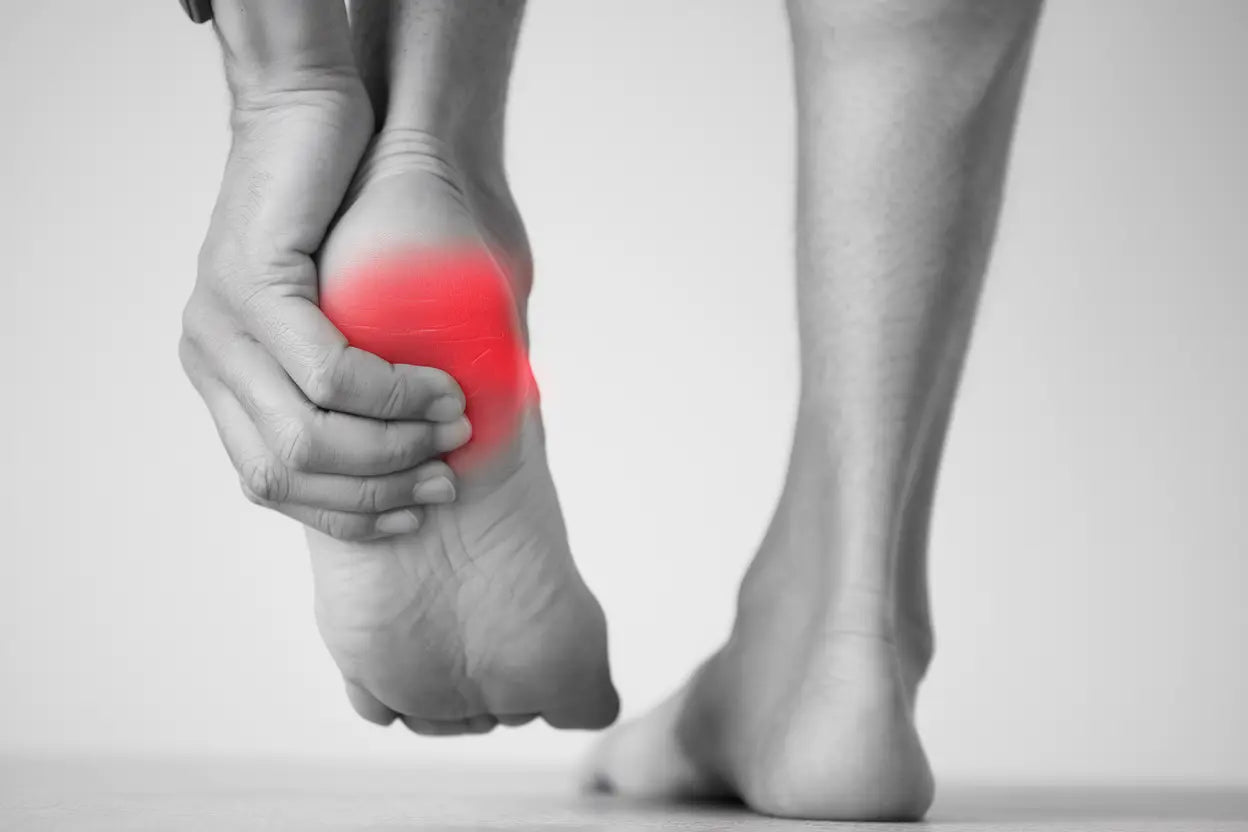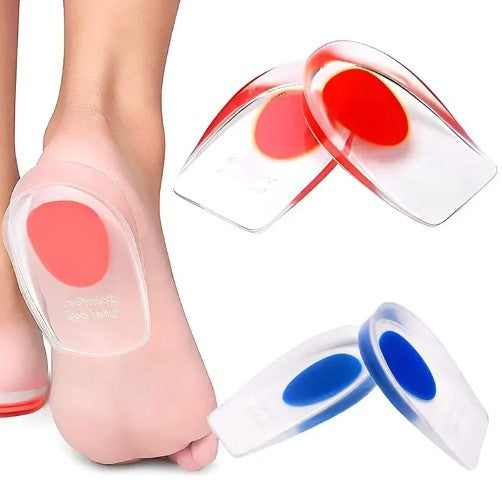Apophyseitis (Sever's Injury): Symptoms, Causes, and Treatment

Heel apophysitis, also known as Sever's disease, is a common cause of heel pain in growing children and adolescents. This article reviews the most common symptoms, causes, and treatment options for this condition.
What is Sever's disease? (Apophysitis of the heel)
Apophysitis of the heel, also known as Sever's disease or Sever's lesion, is a common cause of heel pain in growing children and adolescents. It is an inflammation of the growth plate of the heel bone (calcaneus) that often affects active children during growth spurts.
The medical name is calcaneus apophysitis and is classified according to ICD-10 as M92.8.
Symptoms of Sever's disease
Common symptoms include:
- Heel pain, especially after physical activity
- Tenderness when pressure is applied to the back of the heel
- Swelling around the heel
- Pain when walking on tiptoe or limping
- Worsened pain when running or jumping
Many children describe it as feeling like pressure or a squeezing sensation in the heel. The pain is often worse with activity and better with rest.
Causes and risk factors behind Apophysitis (Severe's disease)
Several factors can contribute to the development of Sever's injury:
- Rapid growth during puberty
- Overload from intense physical activity
- Tight calf muscles
- Incorrect foot position or biomechanics
- Hard or unsuitable shoes
Foot apophysitis and hip apophysitis are similar conditions that affect other parts of the body, but heel apophysitis is the most common form in children. This overuse injury occurs when the tendon that attaches to the heel bone pulls on the growth plate, causing inflammation. People with pronation of the foot may be at extra risk, as the biomechanics of the foot can put additional strain on the heel area.
Severs harm children
Sever's disease in children most often affects active children between the ages of 8 and 14, especially in sports such as soccer, gymnastics, and running.
Treatment aims to reduce pain, relieve pressure on the heel, and speed up healing without requiring the child to stop all activities. Common treatment methods include:
- Use of heel cups or shoe inserts for shock absorption
- Adjusting activity level and avoiding pain-inducing exercises
- Stretching the calf muscles to reduce the pull on the Achilles tendon
- Shoes with good support and cushioning. In more severe cases, temporary rest and physical therapy may be needed. Most children will fully recover once growth is complete.
Treatment of Sever's injury
Sever's disease often affects active children/adolescents and is caused by overloading the growth plate of the heel bone. The goal of treatment is to reduce pain and inflammation, and to relieve the heel without necessarily stopping sports altogether — rather, to adjust the load .
Diagnosis: how Sever's injury is detected
- Physical examination: the doctor/therapist tests for tenderness and strain.
- X-ray: excludes other causes in cases of severe pain or trauma.
- Gait analysis: identifies incorrect foot placement and overpronation.
- MRI if necessary: used in severe or unclear cases.
Common treatment options
- Custom shoes and inserts: heel cup/orthopedic inserts that relieve pressure on the heel.
- Painkillers: short-term if needed to reduce inflammation.
- Physiotherapy and exercises: foot/ankle mobility, calf and arch strength, gradual return to activity.
- Surgery: very rarely, only in severe and therapy-resistant cases.
Benefits of Toe Comfort™
- Advanced adjustment treatment: helps the foot to take on more gentle loads.
- Gradual relief of inflammation: supports recovery over time.
- Non-invasive option: can be combined with exercises and activity.
- For daily use: continuous relief in everyday life and training.
How to get started – simple plan
- Reduce the load to a pain-free level (short break from jumping/running).
- Use heel cups/inserts in everyday shoes and training shoes.
- Ice for 10–15 minutes after activity and light calf stretches 1–2 times/day.
- Build strength in your calf muscles and arches 3x/week.
- Increase activity when walking and light jumping are pain-free.

Aids in the treatment of Sever's disease
Heel cups from Komforten offer several benefits for those with Sever's injury:
- Provides extra shock absorption and relief for the heel
- Helps reduce pressure on the inflamed area
- Can be used in different types of shoes for consistent support
- Improves comfort during daily activities and sports
- Made of high-quality material for optimal shock absorption
When the heel is relieved with heel cups, the traction on the inflamed growth zone is reduced, which provides better conditions for healing. Many children can continue with their activities when using heel cups, and shock absorption can also be helpful for other foot problems such as bunions .
Buy nowConclusion
Apophysitis (Severe's disease) is a common cause of heel pain in growing children and adolescents, but with proper treatment and support, most people can return to normal activity without long-term problems. The use of heel cups, along with activity modification and stretching, can effectively relieve symptoms and support the healing process. It is important to consult a doctor or podiatrist for a proper diagnosis and individualized treatment plan, especially if other foot-related conditions such as nerve damage in the foot are suspected.
Frequently Asked Questions (FAQ)
How long does Sever's injury usually last?
Sever's disease is self-limiting and usually resolves once growth is complete, which can take a few months to a couple of years.
Can my child continue playing sports during treatment for Sever's injury?
Some activity modification is often recommended, but total rest is rarely necessary. Consult a doctor for individual recommendations.
How to use heel cups correctly?
Place the heel cup in the shoe so that the heel rests centered in the cup. They can be used in most types of shoes.
Can Sever's disease be prevented?
While it can't always be completely prevented, regular stretching, using appropriate shoes, and heel cups can help reduce the risk.
When should I seek medical attention for my child's heel pain?
If the pain is persistent, worsens over time, or affects your child's daily activities, you should consult a doctor.

